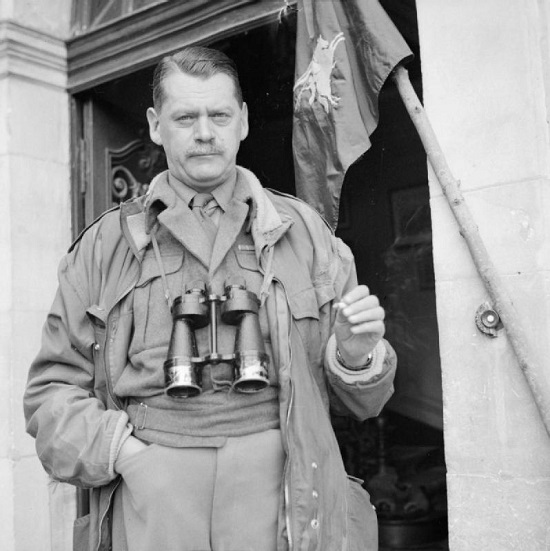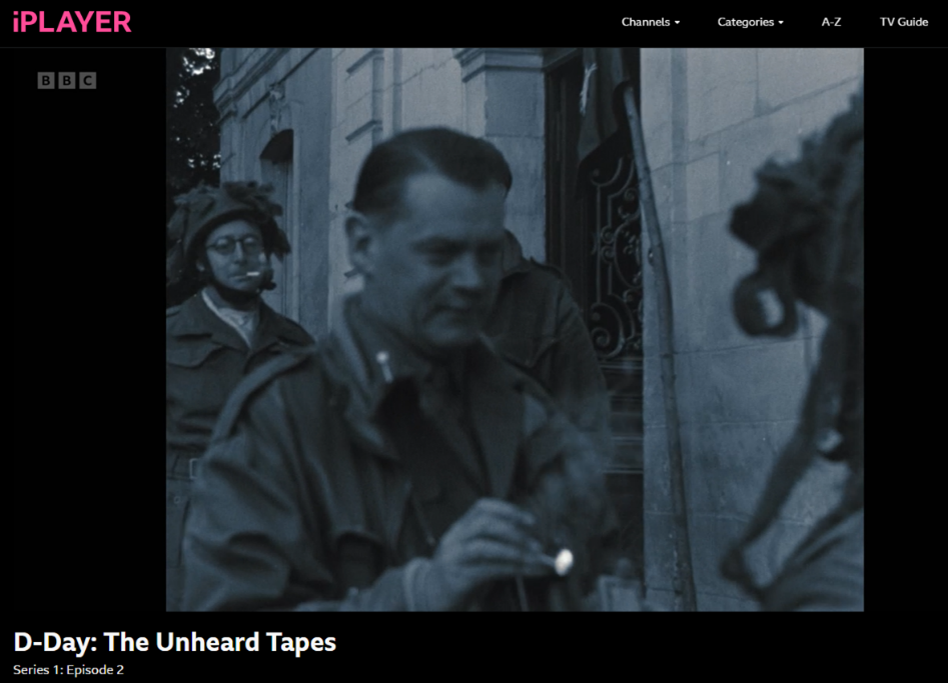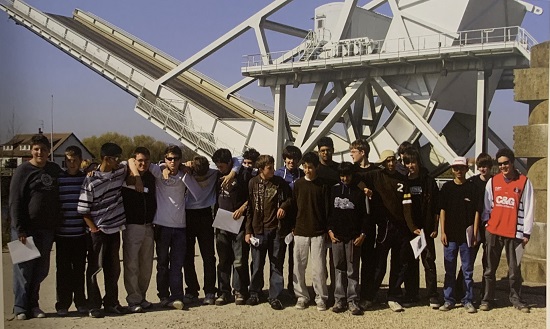General Sir Richard (Windy) Gale (OMT 1911), a key figure in the success of D-Day
As we mark the 80th anniversary of D-Day, Jonny Taylor pays tribute to a former pupil of Merchant Taylors’ who played a key role in the success of the allied invasion of June 6th.
For today’s generation, D-Day is often defined by the HBO series “Band of Brothers” which dramatises the story of "Easy" Company, 2nd Battalion, 506th Parachute Infantry Regiment of the 101st Airborne Division. They played a crucial role in securing the western flank of the Allied invasion of June 6th, but the eastern flank was secured by the British 6th Airborne Division under leadership of a former pupil of Merchant Taylors’, General Sir Richard Gale.

Major-General Richard (Windy) Gale (MTS 1909-1911), Normandy June 1944.
Richard Gale was born in 1896 and attended Merchant Taylors’ from 1909-1911 when it was located at Charterhouse Square. His father worked in insurance and the family lived in Highbury, North London. It would appear that the young Gale found the academic pace at Taylors’ something of a challenge (according to the military historian Major Victor Dover) and although he was an avid reader he moved to Aldenham School to finish his education. Despite a wish to become an officer in the Army, his academic record was not up to scratch, and he initially followed his father into insurance. However, the onset of the First World War enabled him to gain entry to Sandhurst, before finding himself in the Machine Gun Corps where he served until its disbanding in 1922. He fought at the Somme and in the Ypres Salient and won the Military Cross in 1918 for ‘conspicuous gallantry and devotion to duty’ in holding up the German Spring offensive. His action involved going out under heavy fire to unhitch a British gun carriage from killed and wounded horses, allowing it to move to safety.
Gale stayed in the army after the war and when the airborne forces were created, Gale was given command of the 1st Parachute Regiment in the summer of 1941. Gale had a reputation for high morale and standards in the men he led, making him a natural choice for the training of the 1st Airlanding Brigade. He identified the unique challenges of the parachute soldier – overcoming fear to jump out of a plane and surviving by a reliance on his own skill with limited weaponry and ammunition. Gale chose strong leaders with initiative, capable of taking decisions in the field.

Major-General Richard Gale, GOC 6th Airborne Division, addresses his men, 4 June 1944.
In May 1943, Gale was tasked to organise and train the 6th Airborne Division who were to land in Normandy in June 1944. He had little time to prepare and was under incredible pressure.
On the eastern side of the invasion, their task was to capture bridges over the river Orne and Caen Canal, destroy bridges over the river Dives and to destroy the Merville Gun battery by the coast. These objectives were achieved as part of the earliest actions of D-Day, and with them the legends of John Howard’s D Company of the 2nd Battalion at Pegasus Bridge and the 8th Parachute Regiment’s capture of the Merville Battery were created. The story of Pegasus Bridge is told in the BBC’s series, “D-Day: The Unheard Tapes” and film of Richard Gale is included in episode 2.

These triumphs owed much to the bravery of the airborne troops and Gale’s impressive organisation under the pressure of time. The sites have been visited in subsequent years by pupils of Merchant Taylors’ School.

School trip to Pegasus Bridge, Normandy, April 2007.
Richard Gale initially retired in 1957, but in September 1958 he was recalled to serve with NATO and replaced Field Marshal Sir Bernard Montgomery as Deputy Supreme Allied Commander, Europe; he retired permanently in September 1960 and died in 1982. Gale’s success owed much to his individuality, particularly a willingness to challenge established thinking that had led to such high losses in the First World War. He focused on elite training of forces with an emphasis on mobility and surprise. Whilst it is unlikely that his three years at Merchant Taylors’ defined his future success, his willingness to act on his initiative rather than follow established thinking may explain his ‘average’ academic record at the School.
As we commemorate the 80th anniversary of D-Day, we pay tribute to the outstanding contribution of this Old Merchant Taylor to the success of this defining moment of the Second World War.
Following the publication of this article, we were grateful to receive a number of emails from OMTs who wrote with their memories of General Sir Richard's inspection of the CCF in May 1955. The Taylorian of the day notes "The Combined Cadet Force had been inspected by General Sir Richard Gale, who made special journey from Germany."
"I do remember standing at attention in a hot uniform for what seemed a long time in the Spring/Summer heat."
Martin Boothman (OMT 1949-1955)
"Windy Gale inspected the corps in, I think, 1954. In his speech afterwards he tried to get us all to join the army!"
Colin List (OMT 1952-1957)